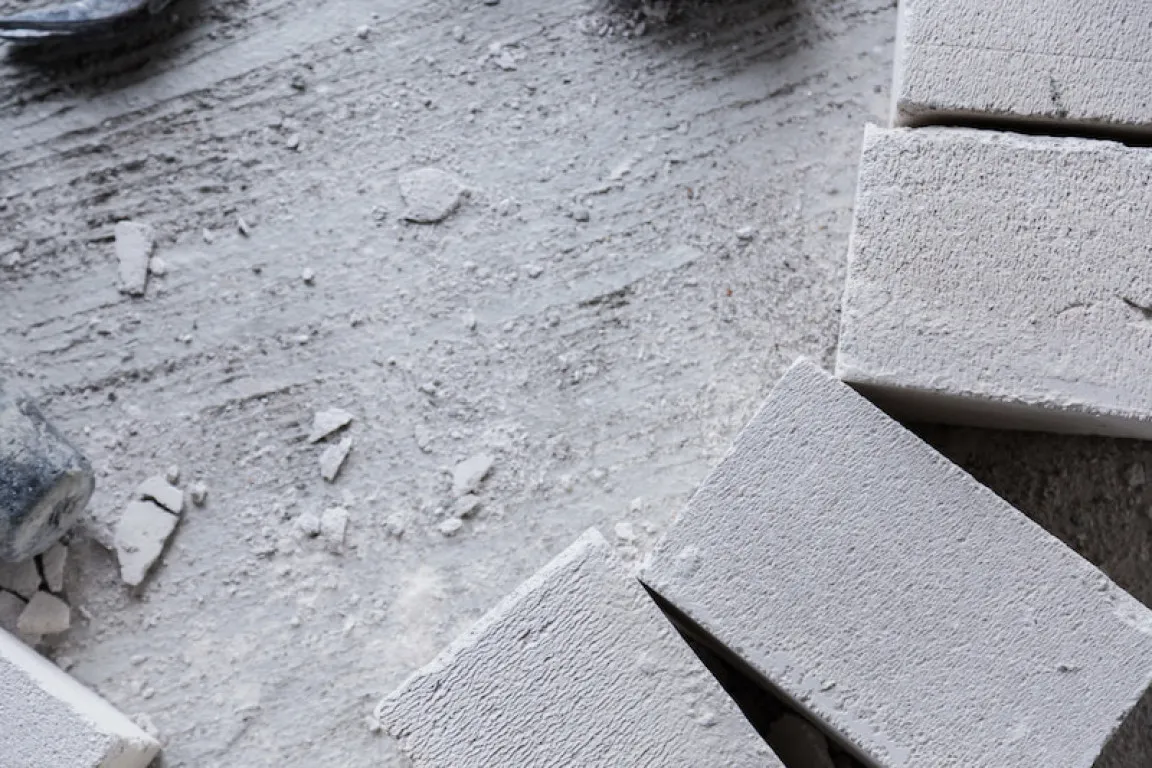Concrete is made from cement, water, and aggregate (sand and gravel). It is known for its strength, weather resistance, and malleability. Different types of concrete, such as reinforced concrete and precast concrete, can meet various construction needs.
Therefore, concrete has become a very versatile building material and is widely used in various types of construction, ranging from foundations, structures, roads, and bridges. Let's learn more about types of concrete and their respective functions in the following explanation!
What Is Concrete?
Concrete is a composite material made from a mixture of aggregates, such as sand, gravel, crushed stone, cement, and water. Portland cement concrete, made from mineral aggregates, cement, and water, is the most commonly used type of concrete.
Concrete is known for its strength, durability, and ability to withstand extreme weather conditions. In addition, concrete has low water absorption, so it does not expand or crack easily when exposed to certain temperatures or conditions.
Concrete Functions
Aside from its strength and durability, concrete is notable for other functions. Some of the uses of concrete in construction are as follows:
- Building Structures: Concrete can build structures, such as walls, floors, and columns. It's also known for its strength and stability, ensuring buildings stand tall in every condition.
- Roads and Bridges: Concrete can provide a strong foundation for roads and bridges. Its durability helps ensure users' safety.
- Waterways: Concrete can build waterways and drainage. Its resistance to water and corrosion ensures that the construction functions as intended.
Types of Concrete
When dealing with construction materials, concrete is considered a key player, known for its strength, flexibility, and durability. However, not all concretes bear the resemblance. Each type has its characteristics and advantages. Some types of concrete are as follows:
1. Plain Concrete
Plain concrete, without reinforcement, is composed of a mixture of cement, sand or gravel, and water in a ratio of 1:2:4. Its weight ranges from 2200 to 2500 kg per cubic meter because of the voids between the pebbles. Meanwhile, its compressive strength reaches 200-500 kg per cm2. This type of concrete is ideal for simple construction, such as roads, houses, buildings, and companies.
Read also: 5 Effective Tips for Concrete Casting
2. Precast Concrete
Precast concrete is made in the factory. It's molded with certain specifications or agreements. The concrete goes through the curing process before being delivered to the construction site. Precasting is done in advance to maintain the quality of the concrete and anticipate unfavorable construction site conditions, such as narrow sites or labor shortages.
Some examples of commonly used precast concrete are beams, stair units, walls, and columns. This way, construction workers can install precast concrete easily. Experts can also carry out the process to maintain the quality of the concrete.
In this regard, you can choose precast concrete products from Semen Merah Putih. Semen Merah Putih precast concrete offers guaranteed quality, consulting services, competitive prices, and timely production.
3. Lightweight Concrete
Lightweight concrete weighs under 1920 kg per cubic meter and contains lightweight aggregates, such as pumice, perlite, and scoria. This type of concrete fits the steel structure protection, span bridge deck construction, and building blocks.
4. Cyclopean Concrete
Cyclopean concrete is characterized by large additional fillers with aggregate cross-sectional dimensions between 15 and 20 cm. It needs standard concrete admixtures to strengthen the structure. Often used to build dams, bridges, and water infrastructure, cyclopean concrete offers advantages in terms of cost savings without compromising on quality.
5. Mass Concrete
Mass concrete is made in large quantities and is easier to apply than other types of concrete. It provides a high contrast between concrete volume, surface area, and concrete dimensions exceeding 60 cm in length. It is often used for the construction of building rooms and dams.
Read also: 3 Ideas to Enhance the Look of Concrete Construction
6. Ready-mix Concrete
Ready-mix concrete is designed with a measured quality. It suits various types of construction, such as industrial, commercial, and infrastructure, including high-rise buildings, housing, roads, and other development projects.
For these needs, you can choose Ready-mix Concrete from Semen Merah Putih. It's the right product for various applications tailored to the needs and demands of consumers.
7. Reinforced Concrete
Reinforced concrete is a mixture of concrete and reinforcement used to increase tensile strength. This is because concrete is strong enough to withstand pressure but weak in tensile strength.
Therefore, added reinforcement can overcome such a shortcoming. Types of reinforcement used include rod, bar, iron mesh, or mesh. Concrete and reinforcement can form a bond that optimizes the strength and durability of reinforced concrete.
8. Vacuum Concrete
Vacuum concrete is made through a special process and produces a completely mixed concrete. It's considered one of the strongest types of concrete and is often used in skyscraper construction.
9. Prestressed Concrete
Prestressed concrete is created by pressurizing or tensioning the reinforcement before the concrete is cast. This tensioned reinforcement is placed firmly from each end of the structural unit during the mixing. Once the concrete hardens, its structural unit is compacted.
This makes the underside of the concrete structural component stronger against tensile forces. The prestressing process requires heavy equipment and specialized skills, so the prestressed concrete units are usually assembled at the project site. Prestressed concrete fits wide-span building structure projects, such as bridges.
10. Non-sand Concrete
As the name implies, non-sand concrete does not contain any sand. The mix only consists of gravel, cement, and water. This absence of sand results in a hollow, air-filled texture in the crevices of the gravel.
This characteristic makes non-sand concrete lighter than normal concrete. Hence, non-sand concrete is ideal for lightweight structural applications, such as columns and beams.
Thus, all you need to know about various types of concrete and their functions. As mentioned earlier, concrete is a versatile material that helps various infrastructure construction.
Therefore, you should choose the right type of concrete that suits your construction needs. If you're looking for high-quality concrete from a trusted manufacturer, such as Semen Merah Putih.
Semen Merah Putih offers a wide selection of precast and ready-mix concrete with the quality and strength levels that suit your construction needs. Using concrete from Semen Merah Putih, you can build a sturdy and durable building structure.
So, contact Semen Merah Putih now to get the best concrete products for your project!
Read also: Knowing the Importance of Concrete Treatment



